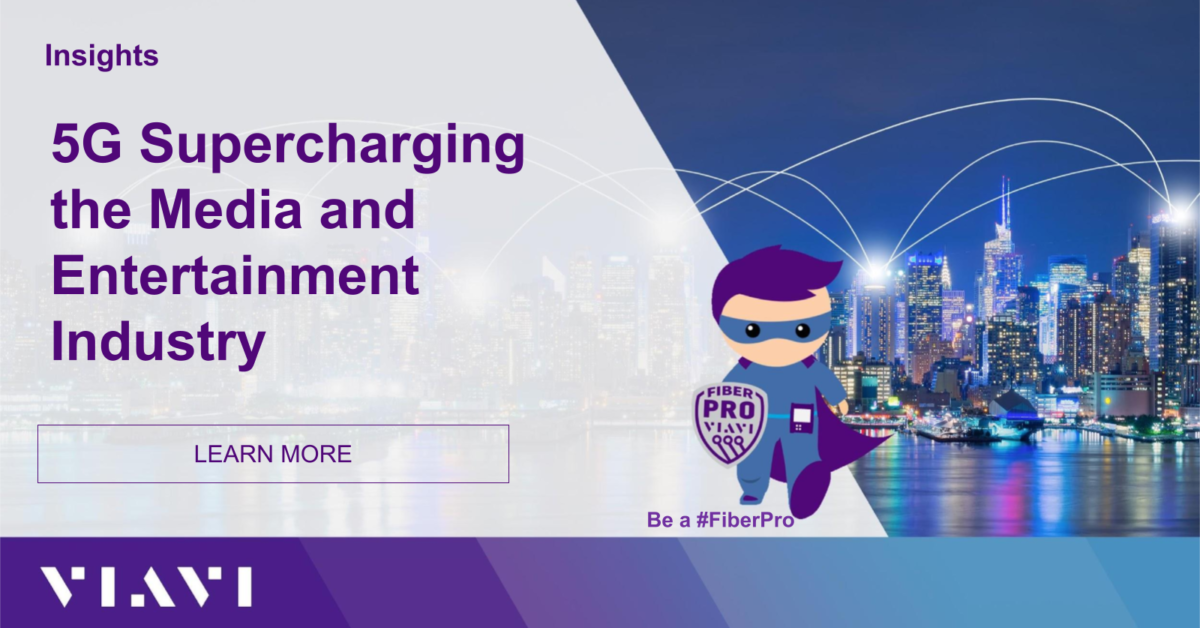5G Supercharging the Media and Entertainment Industry

Of the many up-and-coming technologies discussed today, 5G often tops the list. Innovators and technologists are investigating its potential across numerous industries, and one of the most prominent industries to come up is the media and entertainment industry. Depending on its application and end-user, 5G presents itself both as evolutionary and revolutionary to the markets.
Clear Transformation
Among the first and most noticeable improvements, 5G brings are the advancements in rich media. Faster download speeds and lower latency will produce high-quality, interactive video experiences without any form of interference. The broad frequency bands of 5G will allow just about anybody working in the media industry to reimagine what’s possible. The increased accessibility of 5G will also provide shorter buffering times and less lag, allowing for better-extended reality (XR), more realistic experiences, and readily available on the go. These enhancements will accelerate consumer demand for in-person and live-streamed video content such as sports, news, gaming, and event space.
Not just the media department but entertainment companies around the world have been laying the groundwork for 5G innovations as well, teaming up with network providers, manufacturers, and software developers to unlock new avenues. Users will soon be able to enjoy data-heavy audio and video content while also accelerating demand for premium video, games, and live events. Improved mobile connections at crowded, large-scale venues—where service is often poor—can create the ideal environment that blends physical and virtual engagement, as attendees would be able to interact with each other online whilst accessing exclusive videos and even purchasing merchandise on the spot. Remote viewers won’t need to feel left behind, with immersive broadcasts that transport them to a stadium, arena, or theatre.
Boosts Security
5G itself is not a security risk. But the new technologies that will surround and be enabled by 5G could be. In fact, the future of mobile wireless cyber security will become nearly synonymous with media and entertainment cyber security. Of course, 5G will usher in a new world of devices that can be compromised, like headsets, glasses, holographic displays, and more. And these devices could be another new point of vulnerability and impact media and entertainment cyber security.
Unlike previous generations of network technology, 5G is primarily software-defined, which enables network slicing to divide into many isolated networks that serve specific applications. This should minimize the potential impact of a security breach by reducing the applications and data that can be accessed on a single network. Another media and entertainment cyber security boost are that 5G can enable custom security updates for every device and speed up (and thereby facilitate) strong encryption. For example, 5G can enable the speedy encrypted transmission of virtually everything, including the mobile identity data for devices. It will also make the reliable and consistent use of advanced cryptographic algorithms with 256 bits possible. Data traffic inside 5G infrastructures will be encrypted, too. This individualized encryption of each kind of data traffic will function like sandboxes. If one part is compromised, the other parts should remain protected by encryption.
In the future of 5G-enabled entertainment, the entire security picture will change. Security tools will have to change. Security practices will have to change. And the sooner, the better.
Personalized Advertising and New Realities
Organizations that are working with augmented and virtual reality solutions have seen 5G as a significant enabler. Highly personalized advertising is one of the most attractive commercial opportunities for broadcast services, retail businesses, etc. However, the benefits of 5G offer a more prosperous and faster connection between content creators, distributors, and consumers they strive to build long-lasting relationships with.
It is not absurd to suggest that 5G will accelerate the adoption of many of these tools and potentially change the media landscape. For example, organizations are already looking at ventures such as 5G-enabled stadiums and facilities, which could use the technology to allow viewers to access 360-degree virtual reality views of games and other live events directly from home.
5G’s ultra-fast speeds and lower latency, when combined with augmented or virtual reality, hold a host of new possibilities for the entertainment industry. Already, companies are experimenting with putting viewers in the middle of the action. Viewers wear virtual reality headsets in this use case and then find themselves as characters. They could walk around a scene and interact with other characters. For a generation brought up on a third-person perspective and open-world video games, this would be a completely natural experience. With processing times faster and latency reduced through a combination of 5G and edge computing, the issue that some viewers currently experience with nausea while watching AR/VR would be minimized drastically.
In Conclusion
The 5G technology has unlimited potential as it is shown to be able to completely supercharge the media and entertainment industry, as stated above.
VIAVI Solutions has the confidence to implement new fiber networks or execute quality assurance on existing networks and assist you with 5G validation, 5G testing, and 5G visibility in pursuit of more reliable networking. VIAVI offers end-to-end network solutions through 350+ global Channel Partners to meet your needs. Contact us for more information.


